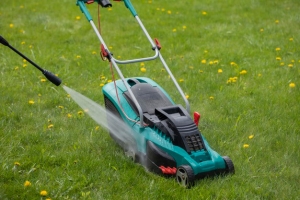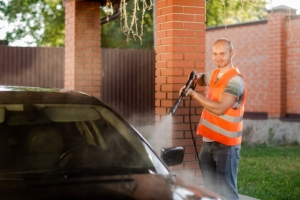Signs Your Hotsy Pressure Washer Needs Repair
Your pressure washer in san antonio is built to last a long time. However, there may come a time when your pressure washer isn’t working as it’s supposed to. If this happens, it likely means your pressure washer needs repair. Below are five signs to look for that will tell you when your Hotsy pressure washer needs repair, along with what you can do to make it less likely that this will happen again.
1. Your Hotsy Pressure Washer Fails To Start
The biggest sign that your Hotsy pressure washer needs repair is when it simply won’t start. If you’ve checked to ensure that there is gas in your pressure washer, then the cause is likely something more serious. Your pressure washer should start with at most a little effort. If you find yourself struggling to start it each time, you should consider taking it in for repairs.

2. The Water Pressure Does Not Stop
At the other end of the spectrum, if you have issues turning off the Hotsy pressure washer once you are done with it, this is also a sign of trouble. You could have a problem with a faulty trigger or the unloader valve. As time goes on, the trigger wand can become worn down or clogged, eventually needing a replacement. Simply replacing these parts can get your pressure washer back to normal.
3. There Is Poor Water Pressure
The purpose of a Hotsy pressure washer is to apply so much force with water that all grease, dirt, and other debris are blasted off the surface. This can’t happen if your pressure washer does not produce high enough pressure. If you turn on your pressure washer and find that it is inadequately cleaning the surface, the culprit could be a blockage within the system. Maintenance on the machine to remove the blockage should return it to proper working condition.
Another thing to consider is your water source. For example, if your pressure washer is connected to your home’s garden hose faucet, ensure that you have opened the faucet entirely. Disconnect the hose from the pressure washer and see that water is flowing strongly through the hose to rule it out as the source of your problem.
4. There Are Leaks In Your Pressure Washer
Leaks within the system can also lead to poor water pressure. Water leaks occur when there is a worn-down seal or when the pump begins to break down. Water leaks not only lead to poorer water pressure, but they are also a waste of water. Before spraying water from your Hotsy pressure washer, look for signs of a leak in the immediate vicinity to diagnose if this is your issue.
5. Your Hotsy Pressure Washer Is Stalling
The last major sign of an issue is if your pressure washer stalls out. This means your pressure washer is starting but shutting off soon after. Stalling can happen for several reasons, such as a bad spark plug or a failing ignition coil. A Hotsy pressure washer service center can diagnose the specific issue and perform the necessary repairs.

How To Prevent Future Problems From Your Hotsy Pressure Washer
To keep your Hotsy pressure washer from breaking down, there are a few things you can do. First, follow all the guidelines for proper use included in your owner’s manual. This includes tightening all connections before running the machine and regularly cleaning out the filter. You should also squeeze the spray wand a few times to prime the pump before use and remove any air from within the system. Finally, allow the Hotsy pressure washer to run for a minute or two before using, as this will allow water to run through the system and prime it for use.
Another thing you can do is use better detergents within your pressure washer. The right detergents not only provide a better clean, but they keep the inside of the pressure washer running well and are less likely to clog up. Whenever possible, use Hotsy pressure washer detergents for the best results.
Taking Your Hotsy Pressure Washer in for Repairs
Although you take excellent care of your Hotsy pressure washer, there may come a time when you start to experience one of the issues listed above. When this happens, it’s time to take your pressure washer to a trusted repair service. You don’t want to attempt these types of repairs and maintenance on your own, as this could further damage the machine.
Hotsy provides maintenance and repairs for all its machines. If you are experiencing an issue, bring it to one of our service centers, and we will get it running again. We can even have replacement parts delivered the next day to get the machine back to you faster.
Your Hotsy pressure washer needs to be in great condition to provide the best possible outcome. A properly functioning Hotsy pressure washer will get your cleaning jobs done faster and more efficiently, saving you time and money in the long run. When you experience one of the problems listed above, or if you suspect some other type of issue with your pressure washer, don’t wait to get it taken care of. Contact the Hotsy Equipment Company and learn how they can assist you.

